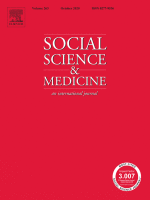
The “flatten the curve” graphic has recently become a common tool to visualize the extent to which pandemic suppression and mitigation measures could potentially reduce and delay the number of daily infections due to a pandemic.

The long-term care (LTC) sector will soon face a shortage of care workers. The consequences are potentially dramatic, urging the need to design policies aiming at reducing the turnover rate of LTC workers.

As of 2019, the global gender employment gap measured in terms of labor force participation was 29.67%. This gap has shrunk significantly over time, but intentional efforts to continue this trend are needed across the world, as evidenced by the United Nations inclusion of women’s economic empowerment as a 2030 Sustainable Development Goal.
In the course of four recent years the unemployment level in the Russian Federation is on the decline. However, application of alternative criteria for the estimation of underutilized labor resources demonstrate somewhat different dynamics.

This paper offers for the first time a global picture of gender discrimination by the law as it affects women’s economic opportunity and charts the evolution of legal inequalities over five decades.
We develop a search model of informal labor markets with worker and firm heterogeneity, intra-firm bargaining with imperfect substitutability across types of workers, and a comprehensive set of labor regulations, including minimum wage.

There is a high labor turnover rate in the construction industry, which negatively impacts the productivity and performance of construction businesses.

Excessive exposure to high temperatures in the workplace is a cause of heat stress, anxiety, and fatigue in industrial workers.
